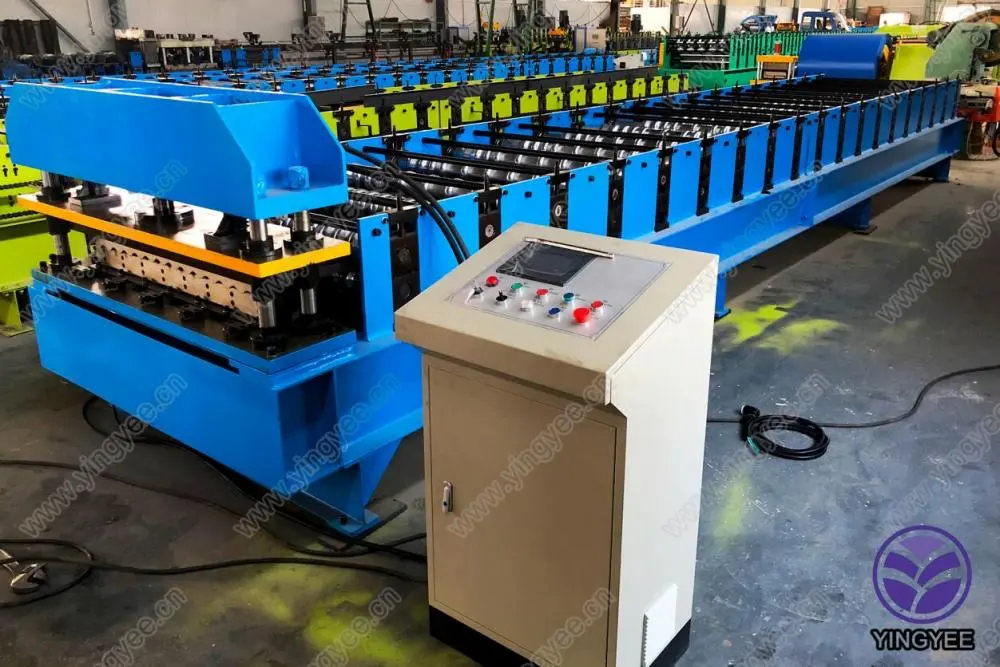
Understanding Light Steel Keel Roll Forming Machines
In the realm of modern construction, efficiency and precision are paramount. One technological advancement that has garnered attention in recent years is the light steel keel roll forming machine. This specialized machinery plays a pivotal role in the production of lightweight steel components, which are essential in various applications such as wall systems, ceilings, and roofing. With the increasing demand for resilience and sustainability in construction, understanding the functionality and benefits of this machinery is critical for industry professionals.
What is a Light Steel Keel Roll Forming Machine?
A light steel keel roll forming machine is designed to manufacture thin-walled steel keel profiles through a continuous process of rolling and forming. The key components of this machine include a decoiler, forming rollers, a cutting device, and a control system. The raw material, typically cold-rolled steel sheets, is fed into the machine where it is gradually shaped into the desired profile as it passes through a series of roller stations. The final product is then cut to the specified length.
How It Works
The process begins with the steel coil being fed into the decoiler, which unwinds the coil and prepares it for forming. As the steel passes through the series of rollers, each roller bends and shapes the steel incrementally until it reaches the final desired profile. This consistent and repeatable process ensures that all produced keels maintain the same specifications, which is crucial for construction integrity.
Control systems allow operators to adjust various parameters such as speed and cutting length, facilitating a seamless production process. Advanced models may even incorporate automation and computer numerical control (CNC) technology, enhancing precision and reducing manual labor.
Benefits of Light Steel Keel Roll Forming Machines
1. Efficiency and Speed One of the standout advantages of using a light steel keel roll forming machine is the speed at which it can produce components. Traditional fabrication methods may require significant labor input and time, whereas roll forming can produce large volumes of steel components quickly.

2. Material Savings Light steel construction is inherently more efficient in material usage compared to traditional methods. The ability to produce precise profiles minimizes waste, which is both cost-effective and environmentally friendly.
3. Versatility These machines can produce a wide range of profiles to meet various construction needs. Different roller configurations can be employed depending on the desired profile, allowing for flexibility in design.
4. Durability and Strength Light steel keels possess high strength-to-weight ratios, making them an ideal choice for modern building applications. Their resistance to warping, twisting, and other forms of structural failure contributes to the longevity and safety of construction.
5. Reduced Labor Costs With the ability to automate many aspects of the manufacturing process, labor costs can be significantly reduced. This enables companies to allocate resources to other critical areas of construction.
Applications
The light steel keels produced by roll forming machines find applications across various sectors. They are predominantly used in the construction of non-load bearing walls, suspended ceilings, and the framing of buildings. Their lightweight nature makes them particularly suitable for high-rise constructions, where weight considerations are critical.
Additionally, their use in modular construction and prefabricated structures is gaining popularity, reflecting a shift towards innovative construction methodologies. This trend aligns with the global push for sustainability, as modular buildings are often more energy-efficient and produce less waste than traditional methods.
Conclusion
The light steel keel roll forming machine is a revolutionary tool in the construction industry, bringing efficiency, precision, and flexibility to the production of lightweight steel components. As the demand for sustainable and resilient building practices continues to grow, investing in such technologies will be crucial for construction professionals and manufacturers. Understanding their operation and benefits will enable stakeholders to enhance productivity, reduce costs, and contribute to the evolution of modern construction techniques. As we look to the future, the integration of advanced machinery like light steel keel roll forming machines will undoubtedly play a vital role in shaping the built environment.